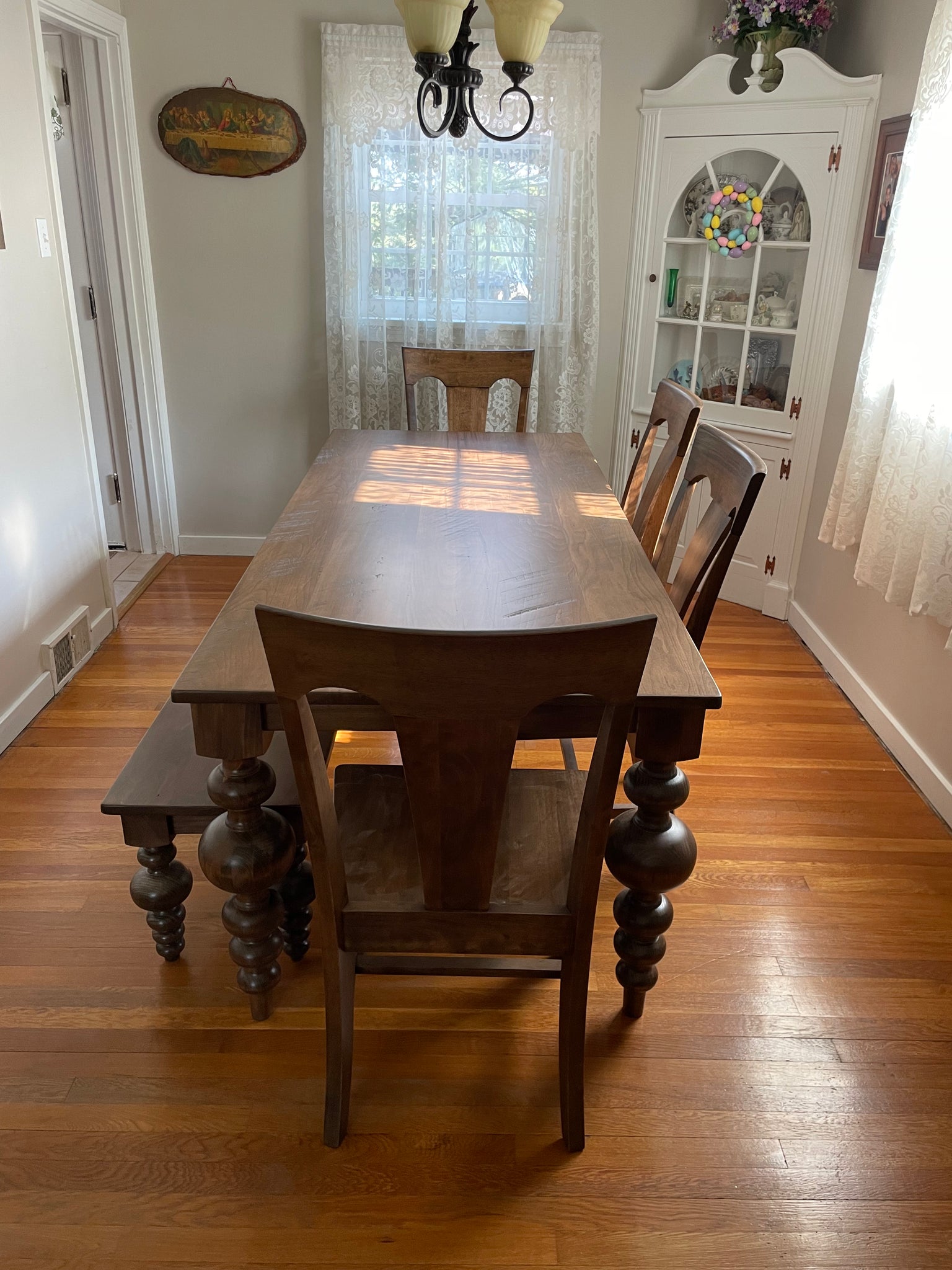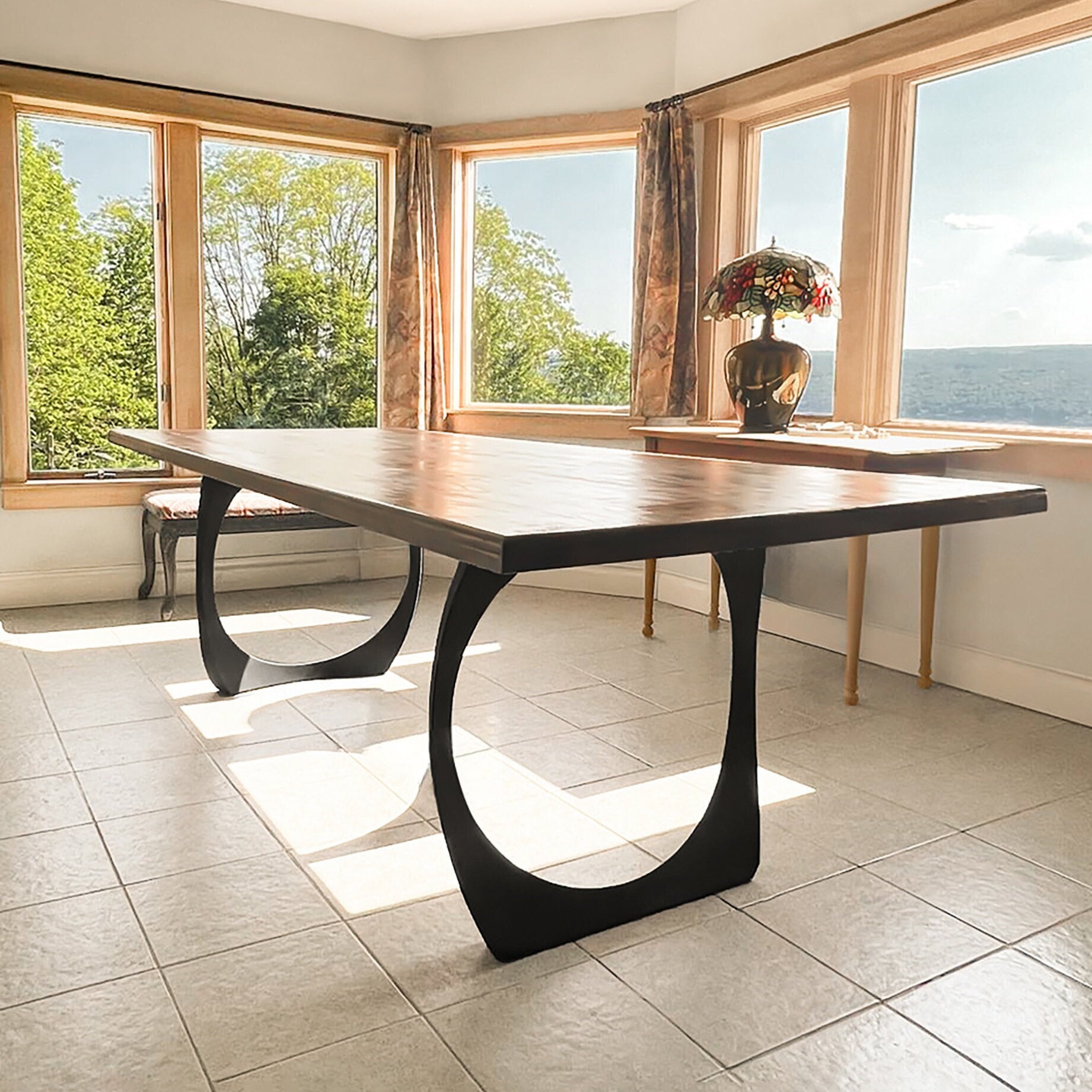The Ultimate Overview to Picking Sturdy Dining Room Table Legs
The Ultimate Overview to Picking Sturdy Dining Room Table Legs
Blog Article
Picking the Perfect Table: What Styles Work Best for Your Home?
Choosing the optimal table for your home can be a nuanced procedure that stabilizes aesthetic appeals and performance. Whether your room leans towards traditional elegance, modern-day minimalism, rustic beauty, or industrial stylish, the range of designs offered can cater to varied tastes. Each design supplies one-of-a-kind benefits and challenges that can either boost or interrupt your eating area's harmony. Recognizing exactly how different materials, forms, and dimensions connect with your existing decor is essential. To navigate these options efficiently and locate a table that really matches your home, take into consideration the following aspects carefully.
Examining Your Area
Evaluating the dimensions and layout of your eating area is an essential initial step in choosing the excellent dining table. Begin by measuring the length and size of the area, accounting for entrances, windows, and other building features that can influence table positioning. This guarantees that your table not only fits yet likewise enables comfy motion around it.
Consider the variety of individuals you typically delight. A table should suit your house's everyday needs while providing enough versatility for periodic guests. As a policy of thumb, assign a minimum of 24 inches of table width per individual to make sure a comfortable eating experience.
It's also necessary to preserve appropriate clearance around the table. Ideally, there need to be at the very least 36 inches in between the table edge and wall surfaces or various other furniture, making it possible for easy access and activity. For areas where chairs with arms or added storage devices like buffets are involved, raising this clearance to 48 inches is a good idea.
Lights and ambience play significant roles as well. Ensure that your dining table aligns with existing illumination fixtures or plan for appropriate lights remedies. This detailed spatial analysis assurances that your table not only fits literally however likewise harmonizes with your space's overall capability and aesthetic.
Popular Table Styles

Traditional dining tables typically feature ornate information, bent legs, and rich timber surfaces, evoking a sense of timeless sophistication. They are best for homes with timeless design or those looking to include a touch of refinement to their eating area.
Modern eating tables focus on simpleness and clean lines, typically integrating materials like glass and metal. These tables are perfect for contemporary areas, supplying a streamlined and minimalist appearance that complements minimalist style viewpoints.
Rustic table, on the various other hand, highlight natural products and a handmade look - dining room table legs. They frequently include reclaimed wood and a troubled coating, creating a warm and welcoming environment. These tables work well in farmhouse-style homes or those looking for a comfortable, organic feel
Industrial dining tables incorporate resources such as metal and wood, frequently showcasing a practical aesthetic. This style is appropriate for lofts or urban spaces, including a touch of rugged beauty and toughness to the dining experience.
Each style uses unique benefits, making it vital to select one that straightens with your home's general style and your personal choices.
Material Choices
When choosing a table, the choice of material plays a vital function in establishing both the table's aesthetics and capability. Timber, steel, glass, and composite products each offer distinct benefits and obstacles, making it vital to straighten the material with your home's style and way of living demands.
Timber is an ageless and functional alternative, offered in selections such as oak, walnut, and mahogany. Recognized for its toughness and warmth, wood matches both traditional weblink and modern insides. Nonetheless, it calls for routine upkeep to prevent scrapes and warping.
Metal tables, typically crafted from stainless steel, light weight aluminum, or wrought iron, are applauded for their modern-day appeal and robustness. They are especially matched for commercial or minimal settings but can be susceptible to dents and might really feel cold to the touch.
Glass eating tables bring an air of sophistication and openness, suitable for smaller areas as they create an impression of more room. While simple to clean, glass can be prone to spots and needs cautious dealing with to prevent chips and fractures.
Composite materials, such as MDF and plywood, offer affordable and personalized options, though they might do not have the longevity of natural products. Choosing the right material ensures your table is both a practical property and an aesthetic joy.
Shape and Size Considerations
After identifying the proper product for your eating table, the next factor to consider is choosing the ideal form and size to fit your area. Conversely, round tables foster a sense of intimacy and are outstanding for smaller sized eating locations, encouraging discussion by removing edges and making every person feel similarly see this site included.
As a regulation of thumb, allocate at least 24 inches of table width per person to make sure comfy eating. Additionally, think about the table's clearance space: there must be at least 36 inches in between the table side and the wall surfaces or other furnishings. Prolonging tables offer versatility if you often host bigger gatherings, giving additional seats when needed without inhabiting additional area daily.
Matching Your Decoration
Selecting a table that integrates with your existing decor is critical in producing a cohesive and inviting space. Begin by assessing your current interior decoration style, whether it be modern, typical, rustic, or eclectic. The table should match the general visual, not complete with it. For example, a streamlined, minimalist table with clean lines is suitable for a modern home, while a vintage, luxuriant table matches a more traditional setting.
If your style includes warm tones and natural products, think about a wooden table to boost the natural feeling. Alternatively, a glass or steel table might be a lot more suitable in a room dominated by cool shades and commercial aspects.
Appearance plays a crucial role also. A rough-hewn, reclaimed wood table can add character to a rustic room, while a refined marble surface can raise an elegant eating area. Consider the scale and percentage of the table in relation to the space dimension and existing furniture. A well-matched eating table not only boosts aesthetic appeal but additionally enhances the general eating experience.

Conclusion
Selecting the ideal eating table demands cautious consideration of you can look here room, design, materials, form, and dimension (dining room table legs). Typical tables complement timeless insides with rich wood finishes, while modern-day tables match modern setups through glass and metal. Rustic designs introduce heat through natural materials, and industrial styles enhance urban environments with raw aspects. Harmonizing the table with existing design ensures both capability and aesthetic allure, adding to a cohesive and aesthetically pleasing eating area.
Report this page